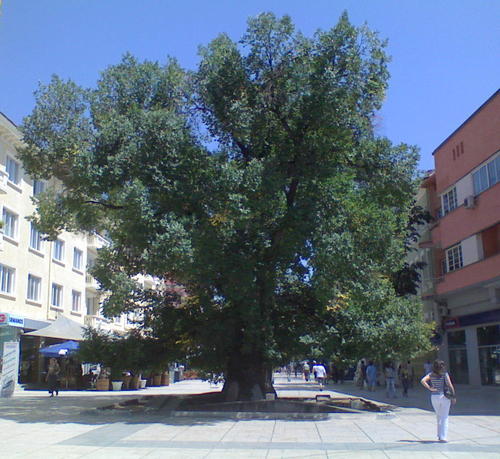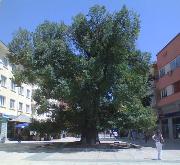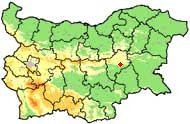The Old Elm-tree (Ulmus carpinifolia)
Type: Parks and Gardens
Location: Town Sliven »
In Bulgarian: Старият бряст (Ulmus carpinifolia) »
The Old Elm in Sliven is a millennial tree - a symbol of the city. it is of Ulmus carpinifolia kind - a broad-leaved tree with a very well developed route system. It is one of the few remaining of the Great Bulgarian Forest (Silva Bulgarica Magna), which has covered the whole area between the Rhodope Mountains and the Black Sea. The tree in Sliven is more than 1000 years old (probably around 1100).
The millennial tree is located in the city center at the beginning of the main promenade and is huge, majestic and beautiful. Part of its stem is cemented to be preserved.
The old elm tree is connected with the history of Sliven since the Turkish yoke:
"This is a famous tree and it is without any concerns one of the greatest symbols of Sliven. It is a sacred tree considered as a monument and a symbol of the fight and the high spirit of the citizens during the yoke. This is an important, touching and proud specimen of a disappearing species. It is not proved but some people believe that many young men and rebellions were hung there during the liberty fights"... (Damian Damyanov)
Today the tree is common place for setting appointments among the local population.
The millennial tree is located in the city center at the beginning of the main promenade and is huge, majestic and beautiful. Part of its stem is cemented to be preserved.
The old elm tree is connected with the history of Sliven since the Turkish yoke:
"This is a famous tree and it is without any concerns one of the greatest symbols of Sliven. It is a sacred tree considered as a monument and a symbol of the fight and the high spirit of the citizens during the yoke. This is an important, touching and proud specimen of a disappearing species. It is not proved but some people believe that many young men and rebellions were hung there during the liberty fights"... (Damian Damyanov)
Today the tree is common place for setting appointments among the local population.







